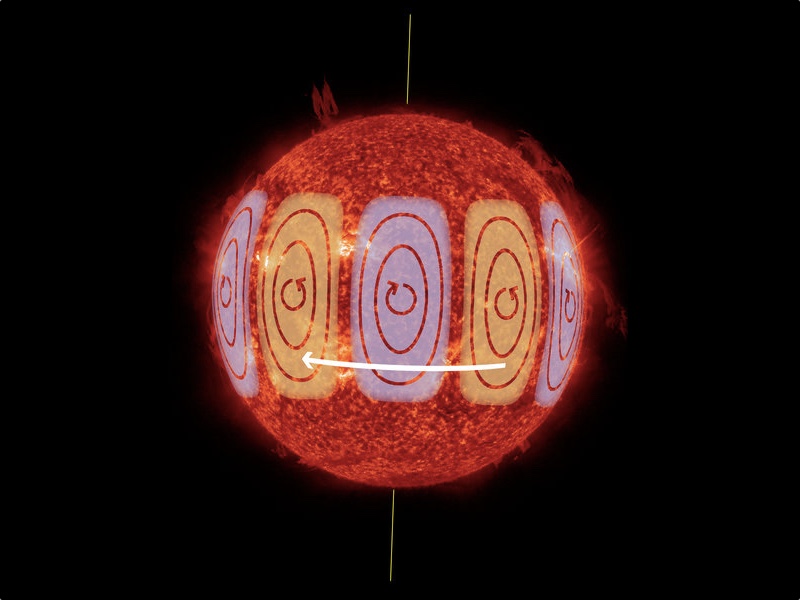Giant Waves Nearly Half a Million Miles Across Seen on the Sun for the First Time

Huge, slow-moving waves that drive Earth's weather and shape the swirls in Jupiter's atmosphere also exist on the sun, new research reveals.
Called Rossby waves or planetary waves, the large-scale waves occur in all rotating fluids, but now they've been identified on the sun. "Solar Rossby waves are gigantic in size, with wavelengths comparable to the solar radius," study co-author Laurent Gizon, of the Max Planck Institute for Solar System Research, said in a statement. (The average radius of the sun is a whopping 432,450 miles, or 696,000 kilometers.)
Even so, these waves move very slowly, with shallow troughs and peaks, so they aren't always easy to detect, especially amid the other swirls and disturbances on a body as lively as the sun.
Last year, scientists used measurements from NASA's Solar Dynamics Observatory (SDO) and Solar Terrestrial Relations Observatory to deduce that Rossby waves might exist on the sun. The new measurements, also taken from the SDO, are more direct and detailed, confirming that the Rossby waves indeed roil the sun's interior. [Anatomy of Sun Storms & Solar Flares (Infographic)]
Hidden movement
Researchers from the Max Planck Institute for Solar System Research, the University of Göttingen (both in Germany), New York University Abu Dhabi and Stanford University analyzed data from the SDO's Helioseismic and Magnetic Imager instrument. They focused on bubble-like granules on the visible surface of the sun, called the photosphere. These granules — each about 600 miles (1,000 kilometers) across, according to NASA — are the peak of convection cells, where heated material from the sun's interior pops up toward the surface, spreads out and then cools, sinking down along the dark lines that divide the granules. According to NASA, these granules are hyperintense, with materials bubbling up as fast as 15,000 mph (more than 24,000 km/h).
The movements of these granules revealed underlying Rossby waves, the researchers reported May 7 in the journal Nature Astronomy.
Energetic waves
The researchers found that the waves occur deep below the surface of the sun, about 12,400 miles (20,000 km) in its interior.
Sign up for the Live Science daily newsletter now
Get the world’s most fascinating discoveries delivered straight to your inbox.
They estimate that the waves are responsible for about half of the sun's kinetic energy, making them key to understanding the star's internal dynamics.
"All in all," Gizon said in the statement, "we find large-scale waves of vorticity on the sun that move in the direction opposite to rotation."
Original article on Live Science.

Stephanie Pappas is a contributing writer for Live Science, covering topics ranging from geoscience to archaeology to the human brain and behavior. She was previously a senior writer for Live Science but is now a freelancer based in Denver, Colorado, and regularly contributes to Scientific American and The Monitor, the monthly magazine of the American Psychological Association. Stephanie received a bachelor's degree in psychology from the University of South Carolina and a graduate certificate in science communication from the University of California, Santa Cruz.









